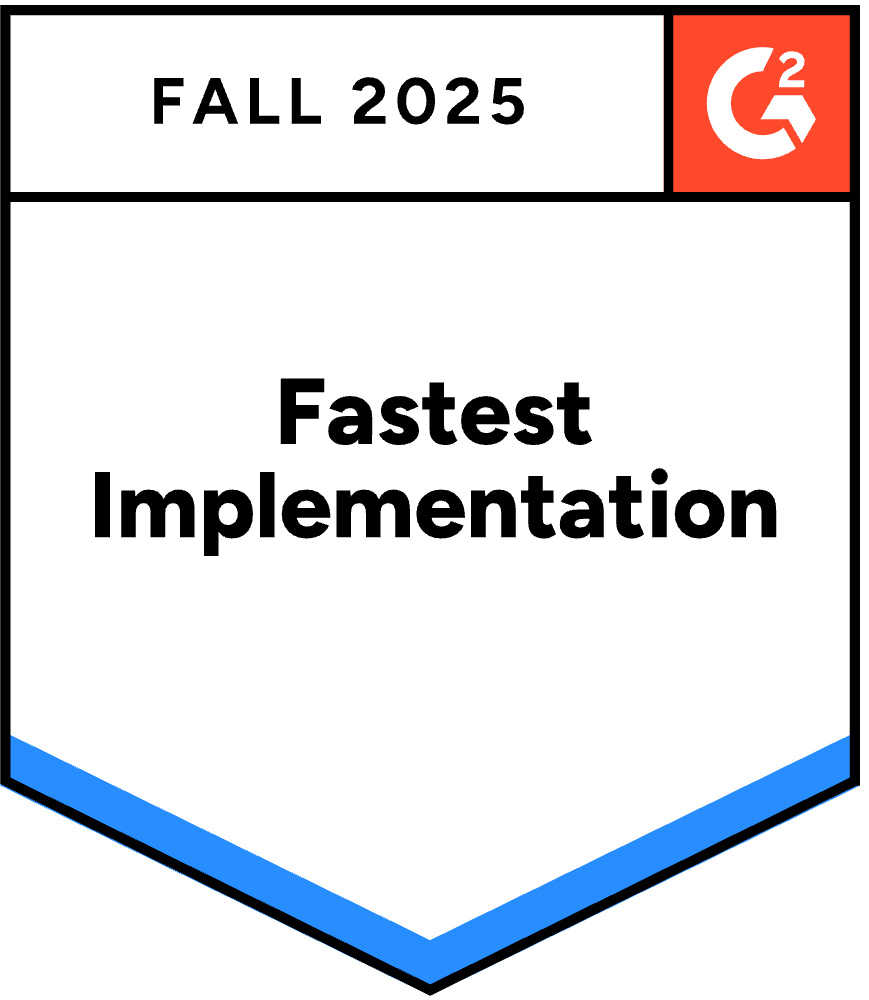Maintaining optimal application performance is critical for business success in today’s service-driven technology landscape. Effective monitoring and management of service levels help you deliver exceptional customer experiences while meeting business objectives. FusionReactor’s full-stack observability platform provides the tools and insights to define, measure, and achieve service level targets.
This guide explores the key concepts of Service Level Agreements (SLAs), Service Level Objectives (SLOs), and Service Level Indicators (SLIs) within the context of FusionReactor’s observability platform.
Understanding Service Level Concepts
What are SLAs?
A Service Level Agreement (SLA) is a formal contract between a service provider and its customers that defines the expected level of service. Business or legal teams typically write SLAs and include:
- Scope and outcomes: Description of the service and what customers can expect
- Metrics: Performance measures like resolution time, error rates, and uptime percentage
- Penalties or remedies: Consequences for failing to meet the agreed levels (service credits, extensions)
- Termination and exit strategy: Terms for ending the agreement
- Exclusions: Scenarios where commitments don’t apply
- Definitions: Technical terms used in the agreement
SLAs are particularly important for paid services, as they set clear expectations and provide a framework for accountability.
What are SLOs?
A Service Level Objective (SLO) is a specific, measurable target that a service provider sets internally to ensure SLAs are being met. SLOs are more detailed than SLAs and include specific targets for metrics such as:
- Service uptime (e.g., 99.9%)
- Response time (e.g., <300ms)
- Error rates (e.g., <1%)
- Request throughput
- System resource utilization
SLOs are flexible and can be updated based on technological changes or service requirements. They apply to both free and paid services and serve as internal benchmarks for performance.
What are SLIs?
A Service Level Indicator (SLI) is the actual measured value of a specific metric that corresponds to an SLO. SLIs provide the data needed to assess whether SLOs are being met. For example:
- If the SLO states “API response time should be less than 300ms,” the SLI would be the actual measured response time, such as 275ms.
- If the SLO specifies “99.95% service availability,” the SLI would be the actual availability percentage, such as 99.97%.
SLIs are the most flexible of the three concepts and can be adjusted according to changing performance requirements.
SLA vs. SLO vs. SLI: Key Differences
The following table summarizes the key differences between SLAs, SLOs, and SLIs:
| SLA | SLO | SLI | |
|---|---|---|---|
| Purpose | Agreements made with the clients for service commitments | Internally focused objectives the service aims to provide to the clients. Serves as benchmarks to measure performance. | Actual values of SLOs to measure the performance of the service |
| When to use | Suitable for paid services | Both free and paid services | Required if SLOs are defined to measure the performance |
| Focus | Scope, metrics, legal and financial consequences | Specific target to meet the SLAs | Actual data to assess the performance |
| Examples | Uptime Percentage, Availability, Resolution Time | Response time less than or equal to 300ms, error rate is less than 2% | Average Response time = 250.1ms Uptime Percentage = 98.9% |
| Flexibility | Less flexible to change as changes require agreement between service providers, legal teams, and clients | Flexible than SLAs. It can be updated according to technological and service requirements. | More flexible than SLOs. It can be adjusted according to changes in performance requirements. |
How FusionReactor Supports Service Level Management
FusionReactor provides comprehensive tooling to help you define, measure, and achieve your service level targets:
Incident Management and Response
FusionReactor’s Incident Management application provides a structured approach to handling service disruptions:
- Incident declaration and tracking: Quickly document incidents that might affect SLAs, assign severity levels, and track resolution progress
- Collaborative task management: Create, assign, and monitor tasks using a Kanban-style interface to ensure coordinated response
- Activity logging: Maintain a chronological record of all actions taken during incident resolution for post-incident review
- User assignments: Bring in the right experts quickly to minimize incident duration and impact on service levels
The ability to manage incidents within the same platform that monitors your services streamlines the response process and helps maintain SLA compliance even during service disruptions.
Real-time Monitoring and SLI Tracking
FusionReactor’s monitoring capabilities allow you to track SLIs in real-time across your entire application stack:
- Full stack visibility: Monitor metrics, logs, and traces from your applications, servers, and databases in a unified platform
- Real-time dashboards: Visualize SLIs through customizable dashboards that provide immediate insight into service performance
- Historical data analysis: Compare current performance against historical trends to identify patterns and anomalies
SLO Definition and Management
With FusionReactor Cloud, you can define and manage SLOs effectively:
- Custom thresholds: Set specific performance thresholds aligned with your SLOs
- Alert configuration: Create alerts that trigger when SLIs approach or breach SLO thresholds
Service mapping: Connect monitored components to particular services for accurate SLO tracking
Advanced Anomaly Detection
FusionReactor’s anomaly detection capabilities help you proactively identify potential SLO breaches:
- Machine learning-based detection: Automatically identify abnormal patterns in performance metrics
- RED metrics monitoring: Track Rate, Error rate, and Duration metrics to catch issues before they affect users
Adaptive baselines: Learn your system’s normal behavior over time to reduce false positives
AI-Powered Insights with OpsPilot
OpsPilot AI enhances service level management by providing:
- Natural language querying: Ask questions about your service performance in plain language
- Automated root cause analysis: Quickly identify the source of performance issues affecting your SLOs
- Predictive analytics: Anticipate potential service degradation before it impacts users
Incident Management for SLA Compliance
FusionReactor’s built-in Incident Management system plays a crucial role in maintaining SLA compliance:
- Real-time incident tracking: Document and manage incidents as they occur within the same platform that monitors your services
- Severity classification: Categorize incidents based on their impact (Pending, Low, Medium, High, Critical) to prioritize those that might affect SLA compliance
- Task management: Assign and track tasks needed to resolve incidents and maintain service levels
- Activity timeline: Maintain a chronological audit trail of all actions taken during incident resolution
- Integration capabilities: Connect with ticketing systems like Jira for comprehensive incident tracking
The Incident Management feature helps teams coordinate their response to service disruptions, ensuring faster resolution and minimizing SLA impact. The system’s structured approach to incident documentation provides valuable data for post-incident analysis and service improvement.
Best Practices for Service Level Management with FusionReactor
Defining Effective SLOs
- Focus on what matters: Use FusionReactor’s dashboards to identify the metrics that directly impact user experience.
- Start conservatively: Begin with achievable SLOs and gradually tighten them as you gain confidence.
- Align with business goals: Ensure your SLOs support critical business functions and customer expectations.
Measuring SLIs Accurately
- Implement comprehensive instrumentation: Use FusionReactor’s agent to capture detailed performance data from all components.
- Standardize on OpenTelemetry: Leverage FusionReactor’s OpenTelemetry support for consistent data collection.
- Validate measurements: Regularly check that your monitoring accurately reflects actual user experience.
Meeting SLA Commitments
- Set up proactive alerts: Configure FusionReactor alerts to notify you before SLO breaches become SLA violations.
- Implement error budgets: Use FusionReactor’s metrics to track your “budget” for allowed service disruptions.
- Conduct regular reviews: Analyze performance trends to identify areas for improvement.
Common Challenges and Solutions
Challenge: Identifying the Right Metrics to Track
Solution with FusionReactor: Use OpsPilot AI to analyze your application’s performance patterns and recommend key metrics correlating with user experience. Start with the RED method (Rate, Errors, Duration) as a foundation.
Challenge: Data Volume and Storage Costs
Solution with FusionReactor: Implement DEEP (Dynamic Enhanced Event Processing) to collect detailed data only when needed, reducing storage requirements while maintaining observability.
Challenge: Correlating Issues Across Complex Systems
Solution with FusionReactor: Utilize distributed tracing to track service requests, allowing you to identify which components contribute to SLO breaches. The Incident Management system helps coordinate responses across teams responsible for different parts of the system, creating a unified approach to resolving complex issues.
Challenge: Maintaining SLA Compliance During Incidents
Solution with FusionReactor: The Incident Management system enables structured incident response with clear task assignments, priority levels, and activity tracking. This organized approach helps teams respond more efficiently to service disruptions, potentially preventing SLA violations. The Kanban-style task management view provides visibility into who’s working on what, ensuring no critical tasks are overlooked during an incident.
Challenge: Aligning Technical and Business Perspectives
Solution with FusionReactor: Create custom dashboards that translate technical metrics into business-relevant visualizations, helping stakeholders understand the impact of performance on business outcomes.
Conclusion
Effective service level management is essential for delivering reliable applications and meeting customer expectations. FusionReactor’s comprehensive observability platform provides the tools to define meaningful SLOs, accurately measure SLIs, and consistently meet your SLA commitments.
By leveraging FusionReactor’s real-time monitoring, anomaly detection, and AI-powered insights, you can transform service level management from a reactive process into a proactive strategy that enhances application performance, user satisfaction, and business outcomes.
Start by identifying your most critical services, defining clear SLOs, and implementing FusionReactor’s monitoring capabilities to track your performance against these objectives. With the right approach and tools, you can build a culture of reliability that delivers exceptional user experiences.










